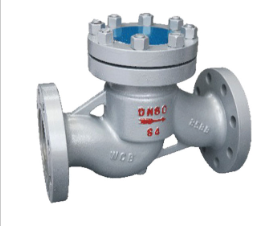Understanding Blind Flange Design Standards for PN16 Pressure Ratings
Understanding Blind Flanges A Focus on PN16 Specifications
In industrial piping systems, flanges play a crucial role in providing a reliable connection between different components. Among various types of flanges, the blind flange is particularly significant due to its unique functionality. This article will delve into the characteristics of blind flanges, emphasizing the PN16 rating and its applications.
What Are Blind Flanges?
Blind flanges are solid disks used to seal the end of a pipe, valve, or other equipment in a piping system. Unlike standard flanges, which have holes to connect to another component, blind flanges are completely solid. This design enables them to effectively prevent the flow of fluids, making them ideal for isolating sections of a piping system for maintenance, inspection, or alteration.
PN16 Understanding the Rating
The term PN stands for Pressure Nominal, which is a European standard used to define the pressure rating of flanges and fittings. The PN16 designation indicates that the flange is designed to withstand a maximum pressure of 16 bar (approximately 232 psi) at a specified temperature. This specification is critical for engineers and technicians as it ensures that the materials used in the system can handle the expected pressures in operation.
PN16 is one of the most commonly used flange ratings across various industries. The designation covers several material types, including carbon steel, stainless steel, and ductile iron, allowing for versatility across multiple applications. The choice of material affects not only the pressure rating but also factors like corrosion resistance and temperature tolerance.
Manufacturing Standards
Blind flanges, particularly those rated as PN16, are typically manufactured according to international standards such as ISO 7005-1 or ASME B16.5. These standards define the dimensions, tolerances, and materials used in flange production, ensuring compatibility and safety in various piping systems. The adherence to these specifications helps prevent leaks and failures, which can have catastrophic consequences in high-pressure systems.
Applications of PN16 Blind Flanges
blind flange pn16

PN16 blind flanges are widely used in many sectors, including
1. Water Supply Systems Used to seal off sections of pipes during maintenance or emergencies in municipal water supply systems.
2. Wastewater Treatment Plants They are crucial for isolating different stages of treatment processes, allowing for easy repair and maintenance without requiring a complete shutdown.
3. Oil and Gas Industry Often utilized in upstream, midstream, and downstream operations to contain hydrocarbons and isolate processing units, ensuring that safety protocols are adhered to.
4. Chemical Processing In settings where toxic or corrosive materials are handled, blind flanges help prevent leakage and maintain safe operating conditions.
Installation and Maintenance
Proper installation of blind flanges is critical to ensure their effectiveness. The flange faces must be clean and flat, and appropriate gaskets should be used to create an effective seal. Bolt tightening must also be performed in a manner that evenly distributes pressure to avoid damaging the flange or the pipes.
Regular inspections and maintenance are recommended to check for signs of corrosion, wear, or improper sealing. This proactive approach helps to avoid unexpected failures and maintains the integrity of the system.
Conclusion
Blind flanges are a vital component in piping systems, providing crucial sealing capabilities and operational flexibility. The PN16 rating ensures that these flanges can withstand significant pressures, making them suitable for a wide range of industrial applications. Understanding the specifications and correct implementation of PN16 blind flanges can lead to enhanced safety, efficiency, and reliability in any piping system. As industries continue to evolve, the importance of high-quality components like blind flanges will remain a priority in maintaining robust infrastructure.
-
The Key to Fluid Control: Exploring the Advantages of Ball Valves in Industrial SystemsNewsJul.09,2025
-
The Versatile World of 1, 2, and 3 Piece Ball ValvesNewsJul.09,2025
-
Stainless Steel Ball Valves: The Ideal Choice for Efficient Flow ControlNewsJul.09,2025
-
Optimizing Fluid Control with Ball Float ValvesNewsJul.09,2025
-
Manual Gate Valves: Essential for Control and EfficiencyNewsJul.09,2025
-
Everything You Need to Know About Butterfly ValvesNewsJul.09,2025
-
The Versatility of Wafer Type Butterfly ValvesNewsJul.08,2025




